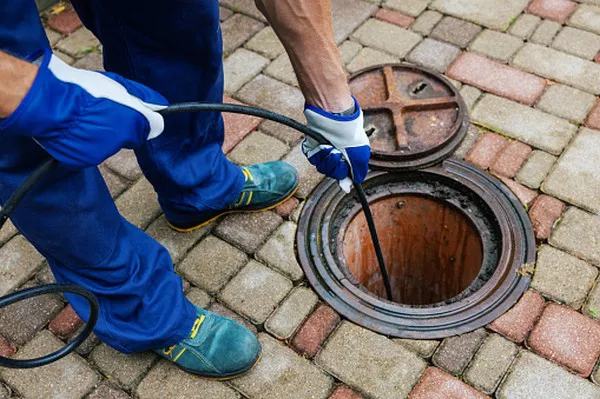Sewage treatment is an essential part of modern urban infrastructure, ensuring the safe and responsible disposal of wastewater while protecting the environment and public health. The process of sewage treatment involves a series of carefully orchestrated steps, each designed to remove impurities and contaminants from the wastewater. In this article, we will take an in-depth look at the steps involved in sewage treatment, shedding light on the technology and methods used in this critical process.
Step 1: Collection
The sewage treatment process begins with the collection of wastewater from various sources. Wastewater can originate from domestic, industrial, and commercial sources. Municipalities typically have an extensive network of underground pipes and sewer systems to collect and transport sewage to treatment facilities. This collected wastewater, also known as influent, is a heterogeneous mixture containing a variety of organic and inorganic contaminants.
Step 2: Screening
Once the influent reaches the treatment plant, it undergoes the screening process. In this step, large debris such as sticks, leaves, and other solid objects are removed from the wastewater. Screening is typically achieved using bar screens or rotating drum screens, which physically filter out the larger objects, preventing them from interfering with subsequent treatment processes.
Step 3: Primary Treatment
After screening, the wastewater enters the primary treatment phase. In this step, the wastewater flows into a sedimentation tank, also known as a primary clarifier. The primary clarifier allows the heavier solids to settle to the bottom, forming a layer of sludge, while the lighter materials, such as oils and grease, float to the surface and are skimmed off. This process helps reduce the amount of organic matter and solids in the wastewater, making it easier to treat in subsequent stages.
Step 4: Aeration and Secondary Treatment
The effluent from the primary clarifier still contains a significant amount of organic matter and dissolved pollutants. To further purify the wastewater, it undergoes secondary treatment, also referred to as biological treatment. This step involves the use of microorganisms, mainly bacteria, to break down and metabolize organic matter.
Aeration tanks, equipped with diffusers or mechanical aerators, provide oxygen to the microorganisms, creating an ideal environment for their growth and activity. These microorganisms feed on the organic pollutants, transforming them into simpler, less harmful substances, such as carbon dioxide and water. Secondary treatment plays a crucial role in reducing the biochemical oxygen demand (BOD) of the wastewater, making it less harmful to the receiving water bodies.
Step 5: Final Clarification
After the secondary treatment, the wastewater enters the final clarifier, which is similar to the primary clarifier. Here, the remaining suspended solids and microorganisms are allowed to settle to the bottom. The clarified effluent, now much cleaner and free of most organic matter, is separated from the settled solids, which are typically returned to the primary treatment process or subjected to further treatment and disposal.
Step 6: Tertiary Treatment (Optional)
In some cases, tertiary treatment is employed to further enhance the quality of the treated wastewater. Tertiary treatment can involve a variety of additional processes, such as chemical coagulation, filtration, and disinfection. These steps are particularly valuable when the treated water is destined for reuse or discharge into sensitive environments. Disinfection, typically achieved using chlorine, ultraviolet (UV) radiation, or ozone, is crucial for killing harmful pathogens and ensuring the safety of the water.
Step 7: Discharge or Reuse
Once the wastewater has undergone the required treatment steps, it is ready for either discharge into natural water bodies or for potential reuse. Discharged treated water, known as effluent, must meet strict regulatory standards to ensure it does not harm the environment. The effluent’s quality is monitored regularly to comply with environmental regulations.
Reuse of treated wastewater has become an increasingly important strategy in water-scarce regions. Depending on the level of treatment and the intended use, reclaimed water can be employed for irrigation, industrial processes, or even potable water supply after extensive treatment and purification.
Step 8: Sludge Management
While sewage treatment primarily focuses on cleaning the water, it also generates sludge as a byproduct. This sludge, a mixture of solids and microorganisms, requires appropriate management. The treatment of sludge typically involves thickening and dewatering to reduce its volume, followed by disposal or further treatment.
Options for sludge disposal or utilization include incineration, landfill disposal, agricultural land application, and anaerobic digestion. In some cases, the biogas produced during anaerobic digestion can be harnessed for energy generation, making this option more sustainable.
Conclusion
Sewage treatment is a complex and multi-step process that plays a vital role in safeguarding public health, protecting the environment, and ensuring sustainable water management. Each step in the treatment process is carefully designed to remove impurities and contaminants from wastewater, culminating in the production of clean effluent that can be safely discharged or reused.
As we continue to face water scarcity and environmental challenges, sewage treatment becomes increasingly important. Innovations in technology and a growing awareness of the importance of responsible wastewater management will continue to drive improvements in sewage treatment processes, making them more efficient, sustainable, and cost-effective. With the proper understanding and implementation of sewage treatment steps, we can ensure a cleaner and more sustainable future for our communities and the environment.

